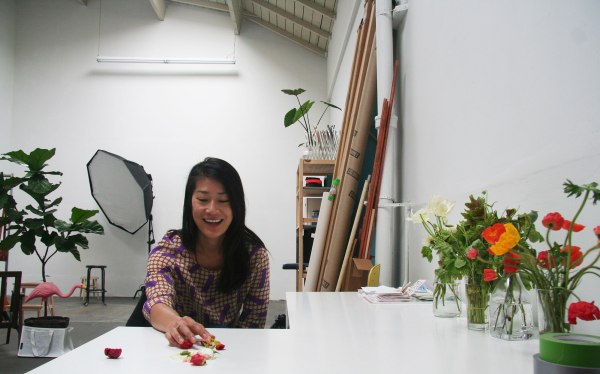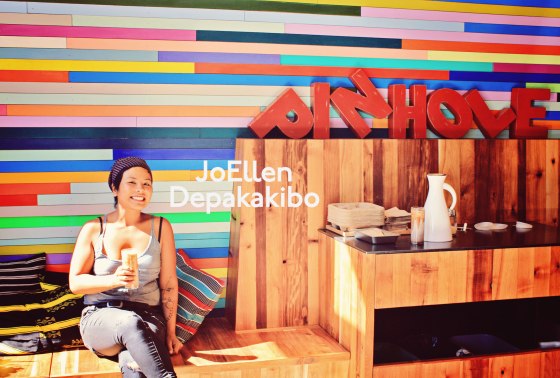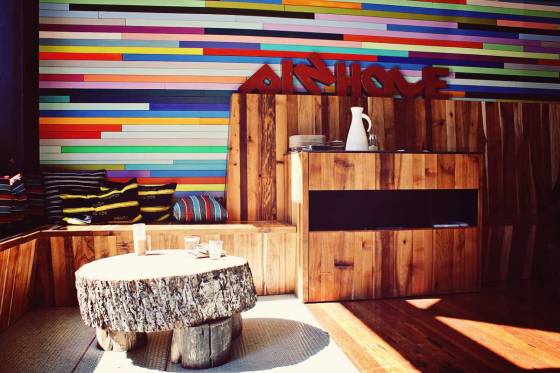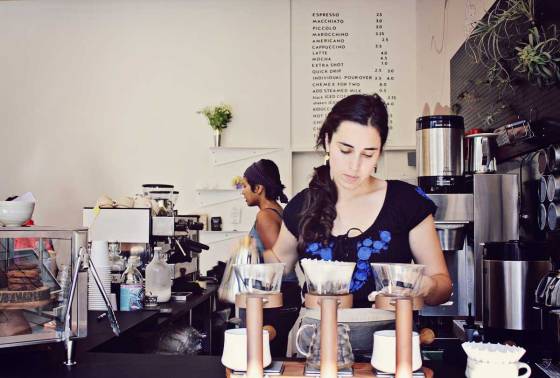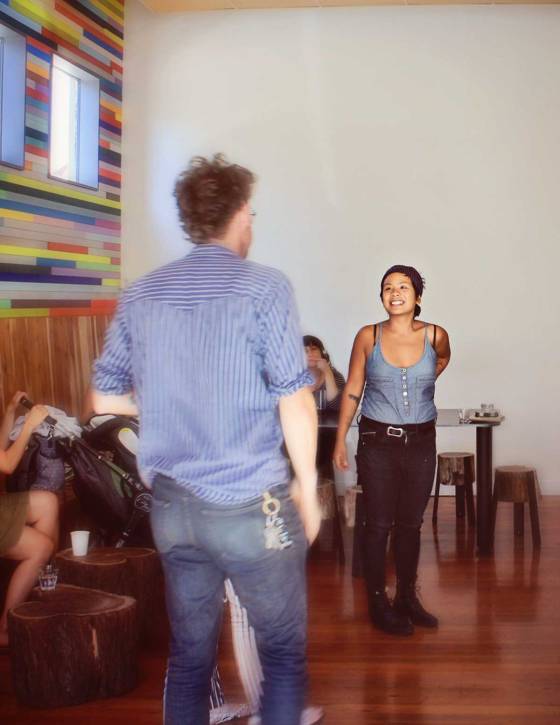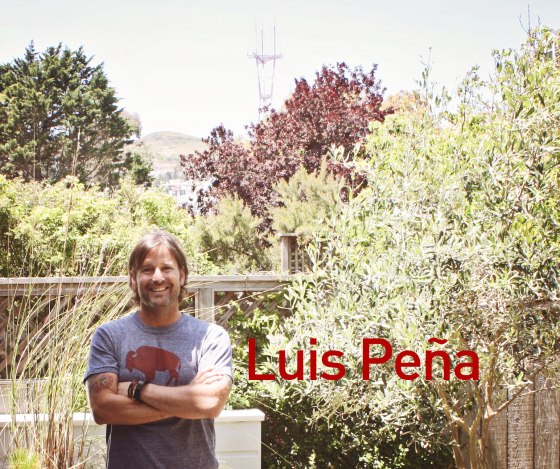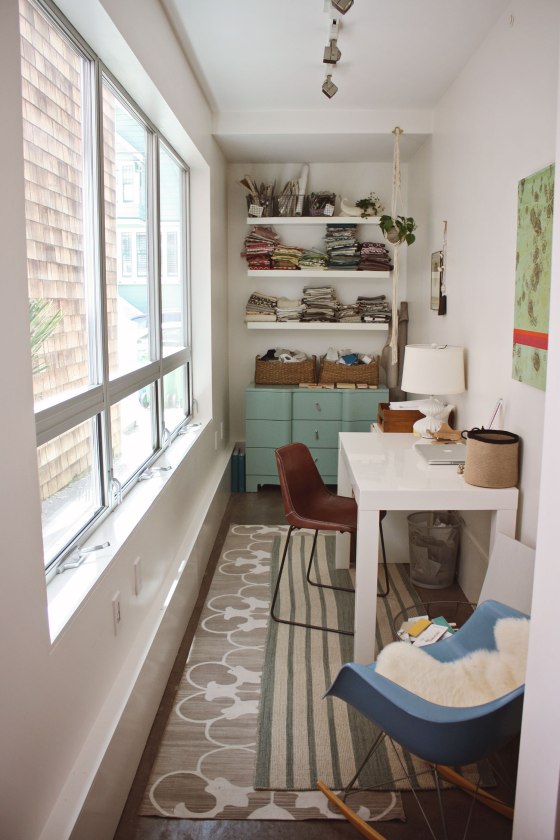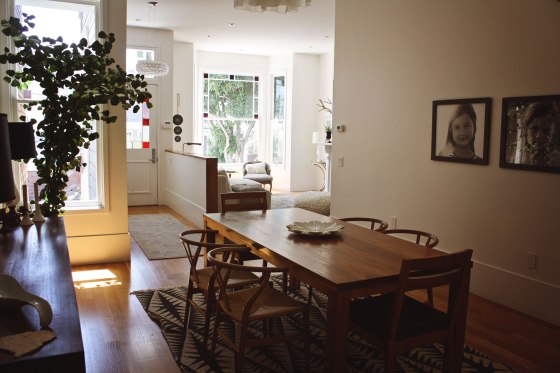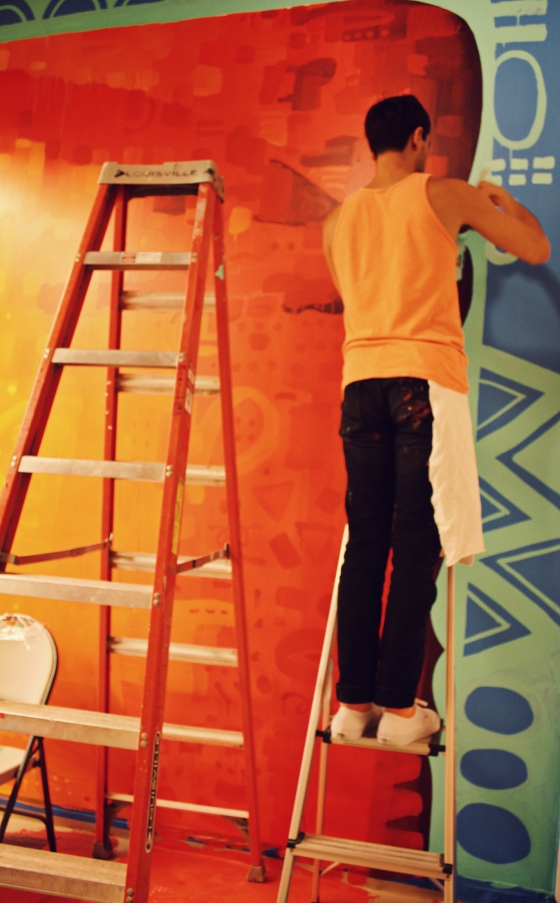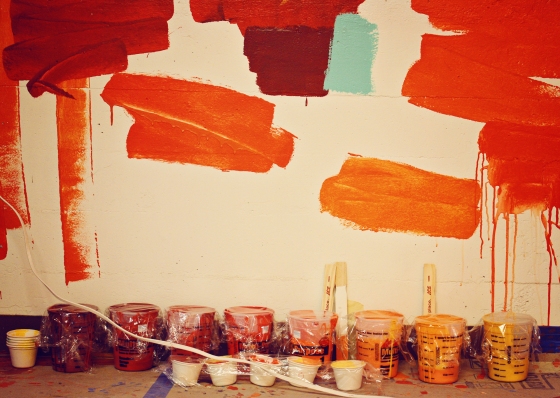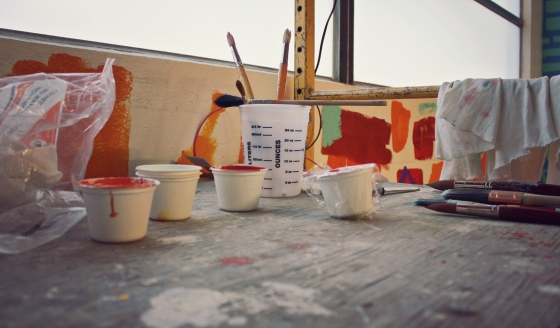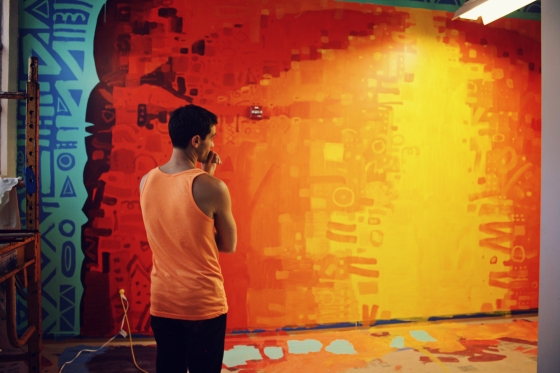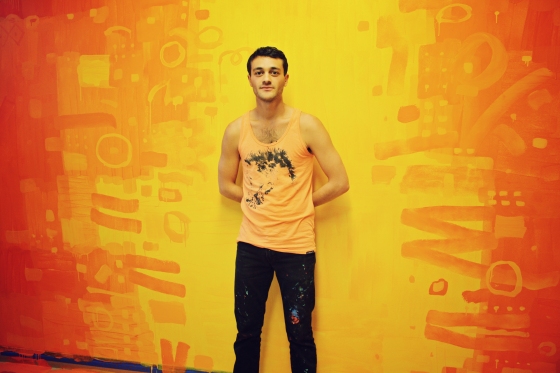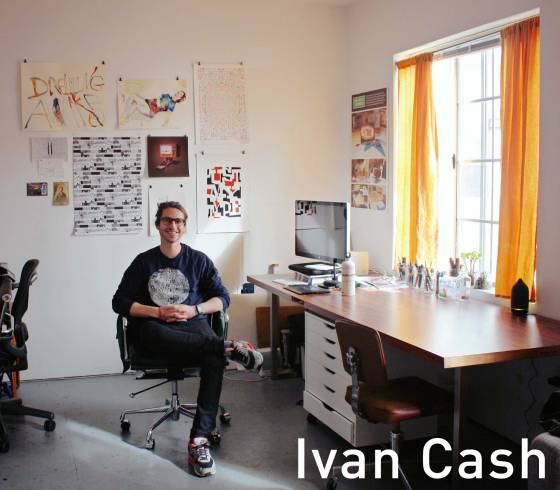
Welcome to the San Francisco series of Inspiring People in Creative Spaces. I’m really excited to kick it off with an interview with Ivan Cash. I learned about Ivan’s work at AKQA when I heard about a presentation he gave before I had arrived. Enjoy the interview and if you happen to have any recommendations for people to interview in SF, please let me know.
What projects are you currently working on?
Right now I’m working on a couple of different projects. I have an ongoing video series that I’ve been doing that’s really near and dear to my heart called “The Last Photo”. I’ve been traveling around to different cities talking to strangers on the street asking them to share their last photo on their phone and the back story. It’s really weird and kind of fun to chat with people in that context. I’ve been learning a lot about anthropology/psychology, but I’ve also learned how to approach people and be as disarming as possible. It’s a really cool process. A simple conversation about the last photo on your phone can tell you a lot about who someone is ( not always, but most of the time ). I’ve hit up San Francisco, New York and Los Angeles. For the last month, I’ve been freelancing at Goodby, Silverstein and most recently Creature in Seattle. I’m pretty fortunate to have the gigs and commercial work, but I’m saving up to go on the road for the photo project. Maybe to some southern cities or smaller ones. I’m also working on Occupy George. We just got commissioned by the Victorian Albert Museum in London to do an Occupy Elizabeth bank note. They’ll exhibit one of our bills in June; I’m working with my buddy on that in New York.
What are one or two favorite projects from the past?
I screen-printed a t-shirt for the New York Knicks back in college. It said “Don’t hate the player or the game, hate the coach.” I sold them outside Madison Square Garden and sold a ton of shirts. I got a ton of press coverage about this college kid selling these shirts. That was the first time I really did a project out in the world; it was really cool to interact with people over this and share this passion with NYKnicks fans. There’s something magical about making a shirt and seeing other people wearing it. With this project, people suddenly wanted to ask my opinion, and it was interesting to suddenly have a voice when I felt like I hadn’t had one before.

What were you doing in New York?
I’m originally from New York, so I was home during winter break from college. I went to about three games and sold more and more shirts every time. I had to start hiring friends to help me. Before the fourth game, I got arrested; three cops were just waiting for me when I got there. I didn’t even have time to set down the box of shirts I was carrying. I got out of jail, called a couple of newspapers and told them what went down. The next day I was on the front cover of the New York Daily News. It was a domino effect; I had my first fifteen minutes of fame. I built a website the next day and continued to sell hundreds of shirts through the site. That was my first instance of doing a creative campaign even though I didn’t know it at the time. I think part of it was a high from the ego sense and wanting recognition, but the part of connecting with people through the project was what really enticed me; the latter has propelled and inspired a lot of the work that I do. I don’t really have an advertising background, but when interviewing, that was the project that got me a job at Venables in San Francisco.
There’s also Snail Mail my Email. That project really changed my life; I guess every project does, but that one stands out. I was over at Wieden + Kennedy in Amsterdam; I wasn’t really feeling it for a variety of reasons so I quit after six months with no plan b. It was the hardest decision I had to make up to that point because it was my dream job, but I wasn’t happy and signed a one year contract. The company had paid a lot of money to move me across the world. Finally, over a therapy session, I was told “You can do whatever you want,” and I kept saying “No I can’t, this is going to happen and that,” and they finally said, “All of those things might happen but you CAN do whatever you want, this is your life!” My mind was blown and I called my girlfriend at the time and screamed, “I realized I can do it, I can do whatever I want.” I quit and wasn’t sure if I was going to go back to advertising. I had been thinking of this idea for a while, of turning emails into handwritten letters, and so decided to make a website called Snail Mail my Email. People would send me an email, I’d hand write it and then send it via snail mail to the recipient. It ended up getting a lot of momentum; a month later over 10,000 letters got sent out, over 200 volunteers signed up to create the letters and mail was sent to over 70 countries. A book came out of it. That project changed my life more so than anything. It really showed me the power of an idea; I didn’t expect all of those things to happen.

It’s really cool how your projects just take off.
It’s kind of surreal. I ask myself, “How did that happen?” Before the Snail Mail project was launched, I had actually just gotten dumped by my girlfriend. There was a lot of angst, frustration and hurt energy that I redirected into something positive. I believe that some of the toughest times can be a catalyst for change. It was actually a similar situation for the Occupy George project: I was hurting so hard and needed to do something with that energy. It was so intense. The Snail Mail project let me put all of my energy into that project and connect with all of those people. Sometimes I even wonder if I could do those projects again to the same scale if I wasn’t in such a shitty place.
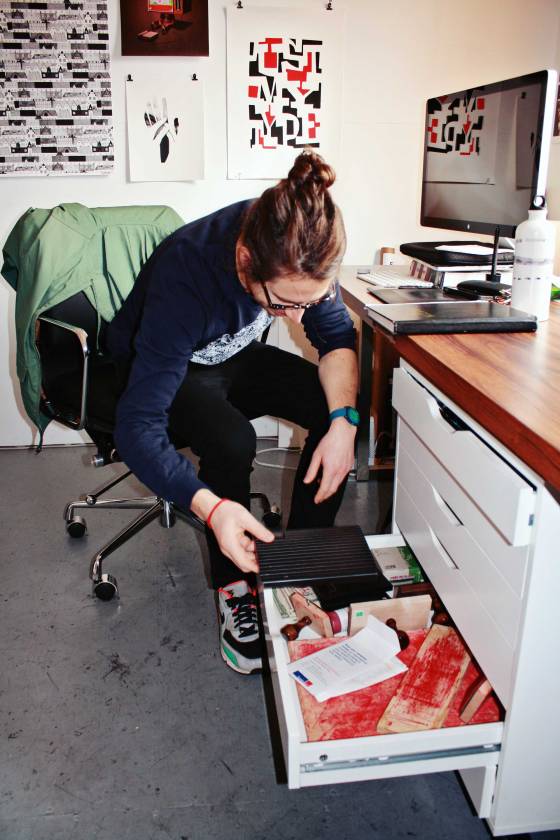

Before we move on, I keep thinking about why these projects have gained momentum: there’s so much power in a simple idea done well and not convoluted. It’s something I’ve been able to really hone. I teach a Creative Ideas class at Miami Ad School and really emphasize the importance of simplicity. I know I’m not the only person preaching it, but there is really something there. You can have an idea but you also have to package it where you can explain it in one quick sentence like “this is it.”
What are you initial thoughts on the importance of creative spaces?
I’ve become more sensitive as I’ve gotten older. I’ve been doing a number of meditation retreats. I am becoming more aware of how my environment affects me. I did a month long silent retreat in March; and my biggest take away was that nature is really relaxing and soothing. I noticeably see the difference in how I feel when I’m in nature versus a city. I didn’t know if that is actually real, but it is true for me. That has translated in a number of ways including this space. I used to share it with three other people for a year and a half. They are all good friends of mine and amazing people; it worked out organically they moved on to other things, but I was actually about to move into another space since I really wanted my own space. People work differently creatively. For me, there’s something really important about having my own space. I like being free from distraction, focused, and feel whatever process I want to engage in and not question it. It’s true even in my living situation; I just moved out of a shared space that was an amazing apartment and had great roommates, but I just realized over the last year I need to have my own space. I mentioned I’m really sensitive, so I pick up the energy of other people really easily without necessarily trying; this isn’t always a good thing, given it has some seclusion. I never really thought of myself as someone who needed my own space, but it’s evolved that way. I have someone that works with me two days a week that assists me. I got a lot of responses to the job posting. After filtering down all of the people and interviewing a few in person, I ended up going with a person who had great energy. He is totally qualified, but it’s also just important for me to work with people that have a similar energy level.

What are your most important items and/or type of arrangements in your space?
My aunt and uncle live in San Francisco, and the moment I walk in I feel so relaxed. Maybe it’s because they are family, but they also have a really nice apartment that is very open and light. I really like Japanese design, minimalistic, plants. I guess even though light isn’t a physical object, it’s the most important to me. Otherwise, I’m not sure if there’s much that really matters. A computer, notebook and pen.
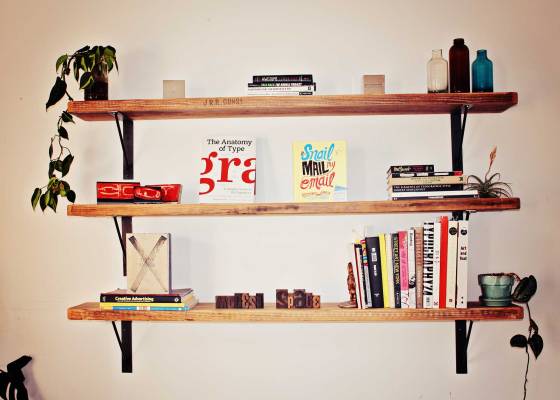
On your website, you define yourself as an interactive artist and filmmaker. I know for myself that I struggle with my title. How did you figure out yours?
I have ongoing jokes with my friends about this since we’re always changing our titles. In this world, some people just end up being doers and it’s really hard to quantify that. I’m calling myself an interactive artist and filmmaker today, but I can guarantee you in a year I’ll be calling myself something different. I deviated from art director a year ago and creative director sounds a little pretentious, but I use that on my business card. Interactive artist felt all encompassing to what I do. Just yesterday someone asked me what kind of art do I do and I didn’t know what to say. It’s really bad. Do I want to go the impressive route, moderate route or how exactly do I explain? Interactive artist is broad but it at least alludes to the interactivity going on. The filmmaker title is new and I’ve been stocking up on film equipment during the past year. It’s something I want to embark on more, so I include it as my title to get more gigs. We are all making it up as we go.
Do you have a process for ideating over human centric projects?
My goal isn’t to come up with human-centric projects, but it ends up being the most interesting to me. I would never confine myself to just human-centric projects, but I just try to be open and self-aware while I’m going through my day. For me, there are two kinds of ideation: one is for a paid project and then personal. I usually lie down with a notebook, pen and brief and [ scribble notes]. My creative process is living my life and constantly, in the back of my head, trying to refine and mull around an idea. I think about how an experience right now relates to what others are feeling in this situation. In advertising, I think it’s easy for someone to lose sight of how someone might feel in a given experience or ad, so I really try to stay true to that and pride myself on creating work that have mass appeal. Anyway, mulling it around, twisting and turning. I have a lot of ideas I haven’t executed yet, so there’s a list in the back of my head.

What role does technology play in your work?
Everything and nothing. I use a computer for almost everything I do. It depends on how you’re defining technology, but everything I do is technology-based in some form. I really embrace technology in that respect, but I’m also really interested in what role technology plays in my life. I think we’re more technology immersed than any other city in the U.S. I think that can have some positive benefits, but it can also be pretty negative. I’m thinking about getting lost in checking websites, not taking enough of a break, etc. I actually left my computer at home yesterday and it’s something I’m trying to do more regularly. I don’t check my phone in the morning. I was talking to someone who said, “Everyone wakes up in the morning and checks his/her email and Facebook.” I was like, “Really? Everyone does that? I don’t.” Maybe everyone does. However, I am really interested in the checks and balances of technology and not unquestionably embracing it. A theme in a lot of my work is trying to bridge the gap between humanity and technology. With selfless portraits, you can draw a stranger’s profile picture; the insight that inspired this project was Facebook encourages breadth over depth. You can have a lot of superficial interactions with people, so the project found a way to make them more meaningful.
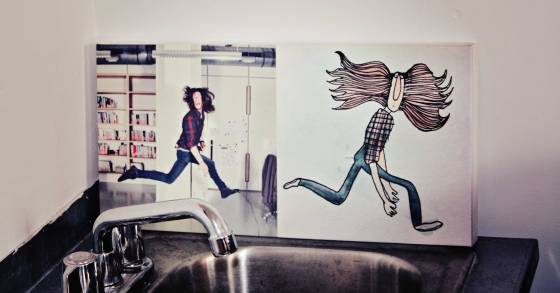
Where do you feel the most inspired and/or creative in the world?
I don’t know if I can answer that since creativity isn’t limited to one space. This is my space right now and I love it; this almost feels more like a home than anything I’ve known since moving out of my family house.
Traveling. Even though it’s not one space, I love being on the move and open to new experiences. Discovery is really important.
Being home. My parents are together and live in the house I grew up in. It’s still a trip to go home and think “Wow, I was a baby here. This is wild.”
Being in a retreat and meditation hall if really inspiring.
I don’t have one place where I come up with my best ideas. I found that posture wise, if I’m horizontal/lying down, I’m a better ideator. So I’ll try and lie down on that couch when I’m really trying to think of ideas. The kernel for selfless portraits came out when I was at Facebook and laid down and within twenty seconds I thought of it.
I don’t know if nature is a cop-out answers, since it’s not space, but more and more I realize the value of getting out.
Something I’ve been beating myself up for my entire life, but realizing it’s a good thing, is having my feet in a few different worlds. Do you know Snooki from the Jersey Shore? I grew up going to school on the same bus as her. My public school was rooted in culture similar to what Jersey Shore emulates, so I felt like an outsider for my whole public school experience. I went to private school for my last three years since i was so miserable at public school. Even there, I still have a lot of great friends, but there were a lot of wealthy people and I felt alienated by that. It was also a very creative & artistic school, so much so that I didn’t really have much confidence in my creativity there. I mean, I took art classes, but didn’t apply to art schools. In the Bay Area, I have friends in advertising, the fine arts world and ones who don’t do art at all (meditation friends). Part of me wants to have one community and one group and not have to bounce around, but I think the moving around in both physical and emotional space with relationships helps me maintain a broad perspective essential for coming up with compelling, wide-reaching ideas.
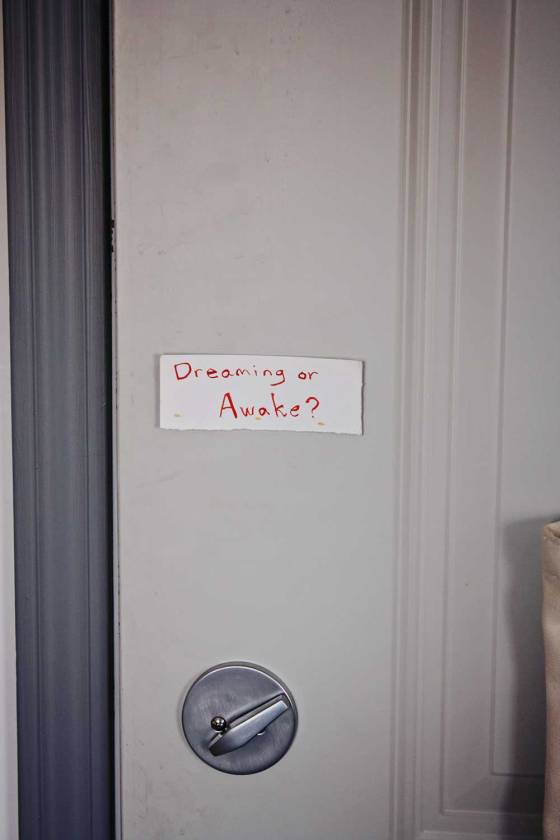
Any advice/words of wisdom?
I have a curriculum at Miami Ad School that’s based around ideating. I banned the word advertising on the first day, so it’s more about the creative process. I feel like I can say a lot about that, but the most important thing to me is just do it. That’s how I’ve learned the most and all of the positive things that have happened in my life from a creative standpoint is just by doing stuff. Not all of my projects are successful in accomplishing everything that I’ve wanted to accomplish, but I think I learn a lot from each one. I didn’t go to art school, I’m pretty self taught and a huge part of that is trying stuff out and seeing what sticks. I guess people learn different ways, but I learn by doing. Maybe this is less about creative ideation, but I’ve done a pretty good job of connecting with people that inspire me. It’s hard to articulate, but it’s important for me to connect with others who have different world views and are doing things I really admire. Somehow that feels really meaningful to me. I’ve been amazed at how accessible famous people are. Lately I’ve met up with a lot of people I’ve had email correspondences with for years and years and that’s been really rewarding. But yeah, I’ll come back around and say just do it. It’s easy to feel intimidated or limited, but a domain costs $10, a tumblr is free, any smartphone has a camera or video recorder. You don’t need a lot, but there’s a lot to be said about an idea. A lot of the interesting artists I see coming into their own and/or even ones who are established are doing amazing work without really having expensive resources to do so.


